Circle Theorems
In the new Ontario Math there is an expectation dealing with circle theorems with chords and angles. These are ripe for investigation and so I used @DesmosClassroom to create two versions of one. They are basically the same with the exception that in one, students have to build most of the constructions (long version) and in the other most of the constructions are done (so the students get mostly just the theorms). Curriculum Tags: MTH1W
In the new Ontario Math there is an expectation dealing with circle theorems with chords and angles. These are ripe for investigation and so I used @DesmosClassroom to create two versions of one. They are basically the same with the exception that in one, students have to build most of the constructions (long version) and in the other most of the constructions are done (so the students get mostly just the theorms). Curriculum Tags: MTH1W
Create a Desmos EstiMystery
If you haven't used Steve Wybourney's EstiMysteries, then you're missing out (https://stevewyborney.com/). If you are using them then you might want to create a Desmos version. These are instructions on how to use my example Desmos activity to create a version of your favourite EstiMystery at the link below and watch this video to find out how to edit it. Curriculum Tags: All
If you haven't used Steve Wybourney's EstiMysteries, then you're missing out (https://stevewyborney.com/). If you are using them then you might want to create a Desmos version. These are instructions on how to use my example Desmos activity to create a version of your favourite EstiMystery at the link below and watch this video to find out how to edit it.
Curriculum Tags: AllPythagorean Area
The idea here is that students investigate the relationship between the area of the squares on the sides of a right angled triangle without giving the explicit formula for Pythagorean theorem (as per the curriculum documents). Focusing on area makes the Pythagorean relationship less abstract.
Curriculum Tags: Gr8M
Curriculum Tags: Gr8M
Circle Diameters
The intent here is that prior to doing this activity, you would have done some physical activity where students measure the circumference and diameter of real circles (either with formal or informal units) to find that the ratio of circumference to diameter is around three The purpose here is to help show that the ratio is actually Pi.Curriculum Tags: Gr7M, Gr8M
https://teacher.desmos.com/activitybuilder/custom/603c2e023614df0d4f67c7aa
https://teacher.desmos.com/activitybuilder/custom/603c2e023614df0d4f67c7aa
Scientific Notation practice
In this activity students practice putting numbers in scientific notation and explain how to do it. Most answers are self checking. There are two versions, one with just positive exponents and one with both positive and negative exponents. Curriculum Tags: Gr7NS, Gr8NS
Positive only:
https://teacher.desmos.com/activitybuilder/custom/5f713da629b5b60b2f6a5aac
Positive and Negative:
https://teacher.desmos.com/activitybuilder/custom/5f6c7c97a9176f3ebf55f986
Positive only:
https://teacher.desmos.com/activitybuilder/custom/5f713da629b5b60b2f6a5aac
Positive and Negative:
https://teacher.desmos.com/activitybuilder/custom/5f6c7c97a9176f3ebf55f986
Adding Fractions Menu Math
Using @NatBanting's #MenuMath structure to have students create fraction addition questions. In this activity, students are given 8 constraints to try to match when creating addition of fractions questions. Their job is to try to create enough questions to satisfy all 8 constraints collectively.
For a paper and pencil version, you can click here:
Curriculum Tags: Gr7NS, Gr8NS
https://teacher.desmos.com/activitybuilder/custom/5ea4dd29957bf80134c0df0b
For a paper and pencil version, you can click here:
https://teacher.desmos.com/activitybuilder/custom/5ea4dd29957bf80134c0df0b
Dividing Fractions Progression and Practice
In this activity the idea is that to help students develop tools for fraction division and eventually get to the fraction division algorithm conceptually. One way to do that without just telling them the rules is to use a progression of successively more and more complex problems. In this activity, the problems become more and more complex with practice along the way and then finishes with a Challenge Creator so students can create their own fraction division problem. This is intended to be a mix of investigation, consolidation and practice and likely won't be done in a single period. If you are using this in an Ontario gr7 class, only the first 4 slides fit their curriculum.
Curriculum Tags: Gr7NS, Gr8NS
https://teacher.desmos.com/activitybuilder/custom/5c8ea44e309dd82445a4de8b
https://teacher.desmos.com/activitybuilder/custom/5c8ea44e309dd82445a4de8b
Pattern Block Piles
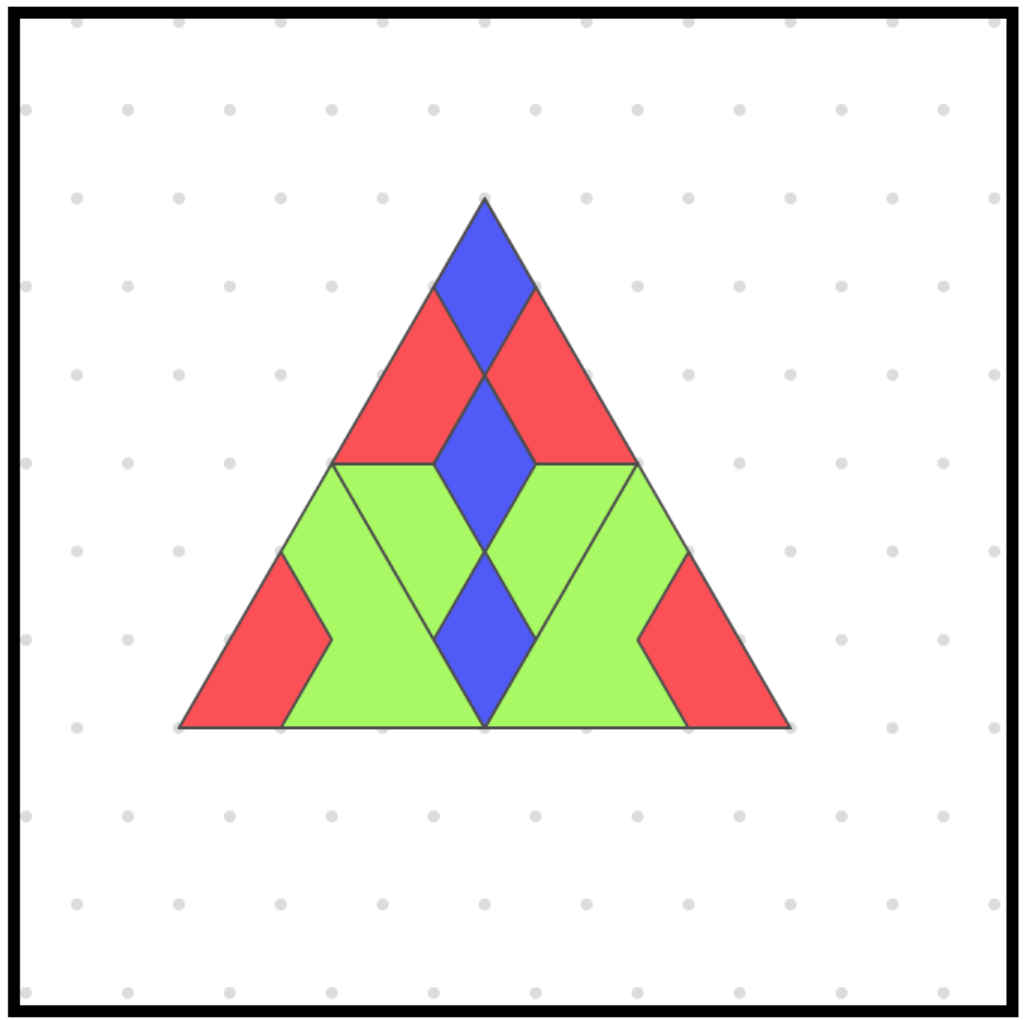 In this activity, students use images of pattern blocks to first work with whole number relationships between the various blocks and then move to fractional relationships (Kind of like FractionTalks - Lite). Students are encouraged to use real pattern blocks to explore the relationships (or virtual ones found here). The activity is self checking so students could work at their own pace.
In this activity, students use images of pattern blocks to first work with whole number relationships between the various blocks and then move to fractional relationships (Kind of like FractionTalks - Lite). Students are encouraged to use real pattern blocks to explore the relationships (or virtual ones found here). The activity is self checking so students could work at their own pace.
Curriculum Tags: Gr7M, Gr8M, MPM1D, MFM1P
Composite Area
 In this activity, students have four practice problems to determine the area of an irregular shape created from rectangles. Each question is self checking and when they are done, they can create their own irregular shape in the Challenge Creator for everyone in the class to solve.
In this activity, students have four practice problems to determine the area of an irregular shape created from rectangles. Each question is self checking and when they are done, they can create their own irregular shape in the Challenge Creator for everyone in the class to solve.
Curriculum Tags: Gr7M, Gr8M, MPM1D, MFM1P
Adding Fractions Progression and Practice
 In this activity the idea is that to help students develop tools for fraction addition. One way to do that without just telling them the rules is to use a progression of successively more and more complex problems. In this activity, the problems become more and more complex with practice along the way and then finishes with a Challenge Creator so students can create their own fraction addition problem. This is intended to be a mix of investigation, consolidation and practice and likely won't be done in a single period.
In this activity the idea is that to help students develop tools for fraction addition. One way to do that without just telling them the rules is to use a progression of successively more and more complex problems. In this activity, the problems become more and more complex with practice along the way and then finishes with a Challenge Creator so students can create their own fraction addition problem. This is intended to be a mix of investigation, consolidation and practice and likely won't be done in a single period.
Curriculum Tags: Gr7NS
Subtracting Fractions Progression and Practice
In this activity the idea is that to help students develop tools for fraction subtraction, one way to do that without just telling them the rules is to use a progression of successively more and more complex problems. In this activity, the problems become more and more complex with practice along the way and then finishes with a Challenge Creator so students can create their own fraction subtraction problem. This is intended to be a mix of investigation, consolidation and practice and likely won't be done in a single period.
Curriculum Tags: Gr7NS
Investigating Decimal Division
The purpose of this activity is for students to get a sense of some patterns when dividing with decimals. It is important to note that this doesn't teach them how to divide by decimals but instead, some of the nuances of related decimal division questions. Many of the pages are self checking and at the end students can create a set of questions for the rest of the class to solve when doing the Challenge CreatorCurriculum Tags: Gr7NS
https://teacher.desmos.com/activitybuilder/custom/5e101b65e0d5c71748b22118
Investigating Decimal Multiplication
This activity is meant to give students a sense of some of the similarities in the answers when multiplying decimals questions that are similar to each other. It is not meant to teach students how to divide decimals explicitly. Once students are done they can create their own questions for the rest of the class to solve in the Challenge Creator
Curriculum Tags: Gr7NS
Modelling Decimal Multiplication (with practice)
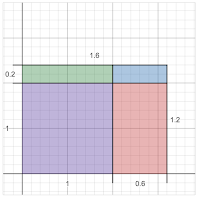 This is meant to help to model decimal multiplication by using the area model of multiplication. It starts with the area model for two digit by two digit multiplication of whole numbers as an optional review (or an introduction). Then it moves to decimal multiplication with an example that you can use to discuss. Both the whole number and decimal divisions have slides with randomly generated questions for students to practice. All of the practice questions are self checking.
This is meant to help to model decimal multiplication by using the area model of multiplication. It starts with the area model for two digit by two digit multiplication of whole numbers as an optional review (or an introduction). Then it moves to decimal multiplication with an example that you can use to discuss. Both the whole number and decimal divisions have slides with randomly generated questions for students to practice. All of the practice questions are self checking.
 This is meant to help to model decimal multiplication by using the area model of multiplication. It starts with the area model for two digit by two digit multiplication of whole numbers as an optional review (or an introduction). Then it moves to decimal multiplication with an example that you can use to discuss. Both the whole number and decimal divisions have slides with randomly generated questions for students to practice. All of the practice questions are self checking.
This is meant to help to model decimal multiplication by using the area model of multiplication. It starts with the area model for two digit by two digit multiplication of whole numbers as an optional review (or an introduction). Then it moves to decimal multiplication with an example that you can use to discuss. Both the whole number and decimal divisions have slides with randomly generated questions for students to practice. All of the practice questions are self checking. Using an Area Model for Two Digit Multiplication
The purpose of this activity is to use an area model to evaluate a 2 digit by 2 digit multiplication. The hope is that students will gravitate to choosing "friendly" numbers to multiply instead. Students can practice as often as they wish until they get comfortable with multiplying. For kids who have mastered the process, encourage them to try to get the answers without doing a diagram (on paper) and using this to check. There is video with instructions on the first slide.
Curriculum Tags: Gr6NS, Gr7NS
https://teacher.desmos.com/activitybuilder/custom/5df791e5c088050a85da3010
https://teacher.desmos.com/activitybuilder/custom/5df791e5c088050a85da3010
Equation Strips
 This is meant to be an introduction to solving equations activity. Here we use equations strips where you have two strips on top of each other with some lengths given and others not. Students have to determine the length of the equally sized white strips. Once they are done, they can then create their own Equation Strip using the Challenge Creator and submit it to the class so they can solve it. Note that it is purposeful to not mention an "x" anywhere as this is an introductory task. You may, however, wish to extend students' thinking by asking the to write an equation to represent each strip. And if you want to take the next step and change the activity, watch this video. For the original activity and a physical version, go here.
Curriculum Tags: Gr7PA, Gr8PA, MFM1P
This is meant to be an introduction to solving equations activity. Here we use equations strips where you have two strips on top of each other with some lengths given and others not. Students have to determine the length of the equally sized white strips. Once they are done, they can then create their own Equation Strip using the Challenge Creator and submit it to the class so they can solve it. Note that it is purposeful to not mention an "x" anywhere as this is an introductory task. You may, however, wish to extend students' thinking by asking the to write an equation to represent each strip. And if you want to take the next step and change the activity, watch this video. For the original activity and a physical version, go here.
Curriculum Tags: Gr7PA, Gr8PA, MFM1P
https://teacher.desmos.com/activitybuilder/custom/5d989847c82e3c201f117333
 This is meant to be an introduction to solving equations activity. Here we use equations strips where you have two strips on top of each other with some lengths given and others not. Students have to determine the length of the equally sized white strips. Once they are done, they can then create their own Equation Strip using the Challenge Creator and submit it to the class so they can solve it. Note that it is purposeful to not mention an "x" anywhere as this is an introductory task. You may, however, wish to extend students' thinking by asking the to write an equation to represent each strip. And if you want to take the next step and change the activity, watch this video. For the original activity and a physical version, go here.
This is meant to be an introduction to solving equations activity. Here we use equations strips where you have two strips on top of each other with some lengths given and others not. Students have to determine the length of the equally sized white strips. Once they are done, they can then create their own Equation Strip using the Challenge Creator and submit it to the class so they can solve it. Note that it is purposeful to not mention an "x" anywhere as this is an introductory task. You may, however, wish to extend students' thinking by asking the to write an equation to represent each strip. And if you want to take the next step and change the activity, watch this video. For the original activity and a physical version, go here. https://teacher.desmos.com/activitybuilder/custom/5d989847c82e3c201f117333
Subtracting Integers Practice
In this activity students can practice basic subtracting integers on the first three (self checking) slides and then create three questions of their own as a Challenge Creator for the rest of the class to solve.
Curriculum Tags: Gr7NS, Gr8NS
https://teacher.desmos.com/activitybuilder/custom/5d9f4b29d60f5f0a50bbf67a
https://teacher.desmos.com/activitybuilder/custom/5d9f4b29d60f5f0a50bbf67a
Linear Patterns Practice
In this pair of activities students are first given a linear pattern in table format and asked (in version 1) to complete the table and graph the points. They will be told when they have the correct values in the table and a line will appear when they have plotted the points correctly. Once they do this for a few different patterns, they can use the Challenge Creator to create their own linear pattern to submit to the class for them to fill in the table and to graph. In version two they have to also determine a version of the algebraic rule.
Curriculum Tags: Gr7PA, Gr8PA
Ver 1 https://teacher.desmos.com/.../5d86e82252fdee7f854d0788
Ver 2 https://teacher.desmos.com/.../5d7d7ddf3acda225552c7e21
Ver 1 https://teacher.desmos.com/.../5d86e82252fdee7f854d0788
Ver 2 https://teacher.desmos.com/.../5d7d7ddf3acda225552c7e21
Welcome to Tile Town
In this activity, students first practice finding shapes that will tile the plane (ie leave no gaps) by tracing out the shapes using the sketch tools. Once they are done, they can use the Mathies Pattern Blocks App within a Challenge Creator to create their own tiled pattern that the rest of the class can practice on to find the shape that tiles the plane.
Curriculum Tags: Gr7G
Investigating the Ambiguous Case
In this investigation, students can get practice using sine law while investigating the nature of the ambiguous case. Once they are done, then students can create their own problems for each other to solve using the Challenge Creator at the end. Because we ask to write down their solutions, this would be best done with iPads or touchscreen laptops.
Curriculum Tags: MCR3U, MCT4C
Graphing Random Points
This is a simple three slide sketch to help students graph points. On it there is a target and students have to graph the point in the centre. The closer they get to the centre the more points they get. Then they can randomly generate a new target. There are three pages, the first page is is first quadrant only, the second page is all four quadrants and the last page is all four quadrants with points that include decimal values (to tenths).Curriculum Tags: Gr7G, Gr8G
https://teacher.desmos.com/activitybuilder/custom/5b967ef4edb93c0cae8d1dac
Geometry from Gr 7-9
 Below are a list of over 20 Desmos Activities that investigate basic geometric theorems that span grade 7-9 here in Ontario (some of which can be seen below). Though these are very basic activities (with some dynamic features) and could be done via paper and pencil, ultimately the power in using them is in exploiting the features of the teacher dashboard to show student work and pace the class.
Below are a list of over 20 Desmos Activities that investigate basic geometric theorems that span grade 7-9 here in Ontario (some of which can be seen below). Though these are very basic activities (with some dynamic features) and could be done via paper and pencil, ultimately the power in using them is in exploiting the features of the teacher dashboard to show student work and pace the class.
Curriculum Tags: Gr7G, Gr8G, MPM1D, MFM1P
Playing with Tessellation
This is a Desmos version of a Websketch I made years ago. In this sketch students explore creating Escher like tessellations by dragging any of the red points to change all of the shapes
Curriculum Tags: Gr7G
Investigating Congruent Triangles
Curriculum Tags: Gr7G
How Steep is this Hill
This is meant to be an short introductory activity to Calculus concepts. Specifically the connection between the slope of the secant and the instantaneous rate of change. The other thing that touches on is the idea that if you zoom in to any curve enough, it can be approximated by a straight line. This was based on an idea originally shown to me by @MathGeek76Curriculum Tags: MCV4U
https://teacher.desmos.com/activitybuilder/custom/597a42cafd8c521bda2e6f27
EQAO Grade 9 Geometry Practice
So this is bit of an experiment. What I have done is taken all of the Grade 9 EQAO (Applied and Academic) geometry questions and put them into a Desmos Activity (one for each stream). The idea here is that students would practice by working out the answers to the angles using the Desmos Sketch feature (ideally this works best on a touch screen device) and then they can check their answer immediately by measuring the angles on the next slide using Desmos geometry. It doesn't really exploit a lot of Desmos features but still could give you some insight into where students are having difficulties.
Curriculum Tags: MPM1D, MFM1P
Constructing Lines and Angles
In grade 7 in Ontario, students are required to physically construct parallel lines, perpendicular lines, perpendicular bisectors and angle bisectors. To do this, they would ideally only have a ruler and compass. In these four activities, students are walked through the steps to create these using Desmos and then given the same instructions to use via physical constructing. Note that, even though Desmos geometry has tools to create perpendicular and parallel lines we won't be using them in order to mimic what would be done in the real construction.Curriculum Tags: Gr7G
Create Parallel Lines Create Perpendicular Lines
Create a Perpendicular Bisector Create an Angle Bisector
Introduction to Vector Equations
Curriculum Tags: MCV4U
https://teacher.desmos.com/activitybuilder/custom/5921dae40cfcd02ba30e79c2
Thanks to Pascale Gallacher for a French version https://teacher.desmos.com/activitybuilder/custom/5ec83c6e889ea30d7988ae8e
Thanks to Pascale Gallacher for a French version https://teacher.desmos.com/activitybuilder/custom/5ec83c6e889ea30d7988ae8e
Varignon’s Theorem
A short quick construction of Varignon’s theorem where students use the geometry tools to build and discover the theorem then use the graphing tools to prove it's true. For an added bonus you can listen to this episode of My Favourite Theorem where @MrHonnor talks about it. As an added bonus you might like this simple @Desmos 2D sketch or this @Geogebra 3D sketch.Curriculum Tags: MFM1P, MPM1D, MPM2D
Parabola Transformation Investigations (Pt1 & Pt2)
Curriculum Tags: MPM2D, MBF3C
Part 1: https://teacher.desmos.com/activitybuilder/custom/59f62b7e58d2772c9dd86ee1
Part 2: https://teacher.desmos.com/activitybuilder/custom/5a146f72c58c00060d268a38
Explore Projectile Motion
In this investigation students explore the variables that affect projectile motion. They start by first exploring the speed, then the angle then combinations of speed and angle and finally speed, angle and launch height. They are given challenges along the way and finally end with a "sandbox" where they can explore and perhaps create their own equation.Curriculum Tags: MCR3U, MCF3M, MBF3C, SPH3U
https://teacher.desmos.com/activitybuilder/custom/5a5e19b0c100d30a8af7804f
Investigate Quadrilateral Diagonals
In this investigation students explore the properties of the diagonals of a quadrilateral to help classify what type it is. There is some minor geometry construction they have to do but there are instructions on how to do it. On the last slide students are challenged to use their knowledge to guess the type of quadrilateral based on the characteristics. NOTE: Geometry in Activity Builder is still in beta form. So there may be times when this is not working correctly (or at all). For a brief walk through video, click here.Curriculum Tags: Quadrilaterals, Gr8
https://teacher.desmos.com/activitybuilder/custom/59f0be8c02bd2107db0aeca7
Subtracting Integers
In this activity students subtract integers by, first, rewriting the questions as addition problems. Then getting a visual solution via a numberline. Finally, they get to practice with randomly generated problems that will self check for the students.Curriculum Tags: Subtracting Integers, Gr7, Gr8
https://teacher.desmos.com/activitybuilder/custom/59e8b1797188fa18debdca96
Cardsort: Solutions of Quadratics
 In this card sort students focus on the solutions of quadratic relations. They are to match up the table, factored and graphical forms for each quadratic. You may wish to switch the factored form to the standard form to make this more difficult. The original version of this was a physical card sort that is used to put students into groups of three http://engaging-math.blogspot.ca/2015/03/sort-students-into-groups-using.html
In this card sort students focus on the solutions of quadratic relations. They are to match up the table, factored and graphical forms for each quadratic. You may wish to switch the factored form to the standard form to make this more difficult. The original version of this was a physical card sort that is used to put students into groups of three http://engaging-math.blogspot.ca/2015/03/sort-students-into-groups-using.htmlCurriculum Tags: Solving Quadratics, Quadratics, Parabolas, Graphs, MPM2D, MBF3C, MCF3M, MCR3U
https://teacher.desmos.com/activitybuilder/custom/58e791d2a3cb2342b3ec93a8
Position, Velocity, Acceleration
Investigating the relationship between position, speed, and acceleration. This is meant to to help students connect the three conceptually to help solidify ideas of what the derivative (and second derivative) means. Students should have had some introduction of the concept of the derivative before they start. Note that this uses the Sketch feature and so is ideally suited to a tablet, though it can be used on a laptop as well. This is a bit long so you may want to give this to students as a take home assignment to be consolidated on the following day. And thanks to @bmorris76865383 there is now a French version.
Curriculum Tags: rates of change, position, speed, acceleration, 2nd derivative, Calculus, MCV4U
Marbleslides: Rational Functions MHF4U
This marbleslides activity is meant to be a consolidation activity after students have studied the properties of rational functions based on linear & quadratic relations as well as functions in the form f(x) = (ax + b)/(cx + d). Note that on each slide, if you create your own copy and edit the activity, there are hidden answers that are suggested. Note: The intent is that students DO NOT use transformations here but, instead, the properties of these rational functions This is part of a bigger investigation with multiple Desmos activities http://engaging-math.blogspot.ca/2017/02/investigating-graphs-of-rational.html
Curriculum Tags: Rational Functions, MHF4U
Cardsort: Reciprocal Functions
This activity is intended to be a consolidation of ideas when looking at graphs of linear & quadratic functions and their corresponding reciprocal functions. Before students do this activity, the idea is that they would have already been introduced to the graphs and started to identify characteristics of reciprocals of linear and quadratic functions. Students, however, at this point shouldn't need much algebraic knowledge of these functions. There are two parts to this activity, first there are two cardsorts. Those are the main thing for students to do. Afterwards there are a few more slides to investigate properties of reciprocal functions based on linear and quadratic functions. They are intended for students who have gone through the cardsort quickly and need extensions. This is part of a bigger investigation with multiple Desmos activities http://engaging-math.blogspot.ca/2017/02/investigating-graphs-of-rational.html
Curriculum Tags: Rational Functions, MHF4U
https://teacher.desmos.com/activitybuilder/custom/581166df0436f1e60592aa04
https://teacher.desmos.com/activitybuilder/custom/581166df0436f1e60592aa04
Investigate Reciprocal Functions
This is meant to be an introductory activity when looking at reciprocal functions of linear and quadratic functions. This is part of a bigger investigation with multiple Desmos activities http://engaging-math.blogspot.ca/2017/02/investigating-graphs-of-rational.html
Curriculum Tags: Rational Functions, MHF4U
Rational Functions in the form (ax+b)/(cx+d)
In this investigation, students look at the connections between the the coefficients and the intercepts & asymptotes of the function in the form f(x) = (ax+b)/(cx+d). There are three parts, first there is an investigation of the intercepts, then the asymptotes, and finally, students test their knowledge with several Match my Function slides. There are a lot of slides here and this could easily be done as a homework assignment that is consolidated the next day in class. This should take 30-50min This is part of a bigger investigation with multiple Desmos activities http://engaging-math.blogspot.ca/2017/02/investigating-graphs-of-rational.html
Curriculum Tags: Rational Functions, MHF4U
Polygraph - Distance - Time
This Polygraph focuses on describing the characteristics of distance-time graphs with linear sections (or more generally piecewise continuous linear functions)
Curriculum Tags: Polygraph, Distance Time Graphs, Gr8, MPM1D, MFM1P
Histograms
 This is meant to be a consolidation task to be done after the class has been introduced to histograms and the distinction between continuous and discrete data. It starts with two card sorts then there are a few slides to get some idea of the connection of average.
This is meant to be a consolidation task to be done after the class has been introduced to histograms and the distinction between continuous and discrete data. It starts with two card sorts then there are a few slides to get some idea of the connection of average.
This is part of a bigger activity http://engaging-math.blogspot.ca/2016/12/introducing-histograms.html
Curriculum Tags: Histograms, Gr8, MBF3C, MDM4U
Graph Sort
This activity is an introductory activity meant to introduce histograms. By showing students bar graphs and histograms and asking them first to sort them in any way, then to sort them into two groups and then finally two groups where one are bar graphs and the other are histograms (don't tell them that, just show them an example of each). This is part of a bigger activity http://engaging-math.blogspot.ca/2016/12/introducing-histograms.html
Curriculum Tags: Histograms, Gr8, MBF3C, MDM4U
Catch em All
In Pokemon Go players try to "Catch em All" but sometimes they just can't. In this activity students will explore some data collected about the number of times particular Pokemon were seen and caught.
This is intended for students just starting to explore the idea of interpolation/extrapolation and the line of best fit
This is part of this larger blog post where all the data is collected and there is opportunity to collect more http://found-data.blogspot.ca/2016/09/collecting-data-from-pokemon-go.html
Curriculum Tags: Linear Regression, Interpolation, Extrapolation, MPM1D, MFM1D, MAP4C, MDM4U
Derivatives of Polynomials
Investigate the nature of the derivative with simple polynomial functions (in this case mostly quadratics). This meant to be a graphical introduction to the power rule so if students have not done the algebraic work of using the limit to determine the derivative, they should be fine. If that is the case then the word "derivative" may be new to them. If they have experienced taking the limit to determine the derivative of a polynomial then this could be a way to consolidate it graphically. This was based on a sketch originally done by @Eluberoff and a full activity including a physical construction can be found here.Curriculum Tags: Derivatives, Calculus, MCV4U
https://teacher.desmos.com/activitybuilder/custom/571ed42ef68cf5f10ee49d22
Match My Line (Direct Variation)
In Ontario our grade 9 students describe linear relationships as direct or partial variations. Our grade 9 applied students are supposed to look at linear relationships only if they are in context. This activity investigates direct variations in the context of a distance time graph.Note that you may want to change the title so that the phrase direct variations does not appear so it does not give away the topic. This was inspired by Michael Fenton's Match My Line which is awesome. Check it out here
Curriculum Tags: Linear Functions, MPM1D, MFM1P
https://teacher.desmos.com/activitybuilder/custom/55dc5f63265fda125f26f67f
Match My Line (Partial Variations)
In Ontario our grade 9 students describe linear relationships as direct or partial variations. Our grade 9 applied students are supposed to look at linear relationships only if they are in context. This activity investigates partial variations in the context of a distance time graph.Note that you may want to change the title so that the phrase direct variations does not appear so it does not give away the topic. This was inspired by Michael Fenton's Match My Line which is awesome. Check it out here
Curriculum Tags: Linear Functions, MPM1D, MFM1P
https://teacher.desmos.com/activitybuilder/custom/55dc9768265fda125f2847d5
Number Sentences - Equations
This is a very simple sorting activity where students are given expressions & equations and the sentence to describe them and have to match them up. This is meant to be an activity that is relatively quick. There are three sorts that are all very similar to each other so you may wish to break students up into groups and assigning different sorts to each group. In each sort there are some equations that have no match. Students will have to create their own sentences following the sort. For a the more traditional "hands on" version click here http://engaging-math.blogspot.ca/2016/02/number-sentences.htmlCurriculum Tags: Algebra, Equations, Gr7, Gr8, MPM1D, MFM1P
https://teacher.desmos.com/activitybuilder/custom/578a839d2458b548194bdb75
Number Sentences - Expressions
This is a very simple sorting activity where students are given expressions and the sentence to describe them and have to match them up. This is meant to be an activity that is relatively quick. There are four sorts that are all very similar to each other so you may wish to break students up into groups and assigning different sorts to each group. For a the more traditional "hands on" version click here http://engaging-math.blogspot.ca/2016/02/number-sentences.htmlCurriculum Tags: Algebra, Expressions, Gr7, Gr8, MPM1D, MFM1P
https://teacher.desmos.com/activitybuilder/custom/578a780c861c7b82316ed2d9
Investigating Rates of Changes of Functions
This is a short investigation to introduce the idea of regions of increase and decrease as they relate to rate of change and maxima and minima of functions. It is based on an interactive Flash object I designed for the Ministry of Ontario over 10 years ago for their eLearning project.Curriculum Tags: Rates of Change, Calculus, MCV4U
https://teacher.desmos.com/activitybuilder/custom/56c35b1c5da35e0b4c1efec5
Can You Survive a Jump off of a Cliff?
The purpose of this activity is to conceptually investigate projectile motion by first looking at D-t graphs as well as graphs that represent the path of motion. There is very little calculation involved in this series of slides (though a clever kid might still do some) and it makes use of the Sketch feature of Activity Builder so students can draw right on some of the graphs.Curriculum Tags: Parabolic Motion, MPM2D, MFM2P, MCR3U, MBF3C
https://teacher.desmos.com/activitybuilder/custom/574d8cf4436eb9c449fc0906
Show Me a Triangle
This is meant to be a very simple activity that lets teachers quickly see if students have the general idea of the difference between acute, right, obtuse, isosceles and equilateral triangles. When you look at the OVERLAY view of your student work, any students who have issues should stand out from the others.Curriculum Tags: Triangle Properties, Gr 7
https://teacher.desmos.com/activitybuilder/custom/57178f667e5eb51b06de9287
Shown Me an Angle
This is meant to be a very simple activity that lets teachers quickly see if students have the general idea of the difference between acute, right, obtuse, and straight angles. When you look at the OVERLAY view of your student work, any students who have issues should stand out from the others.Curriculum Tags: Angle Properties, Gr6
https://teacher.desmos.com/activitybuilder/custom/570d413d22c6711a062efc28
Des-Draw Linear
This activity was modified from @mathycathy's activity so that students would only use linear relationships. Below is her description:While the original Des-Man is receiving a makeover, give Des-Draw a try! My hope is to leave it open to encourage students' creativity while helping them brush up on restricting the domain and range of various functions... gently reminding them that using inequalities can create some rad shading
Curriculum Tags: Linear Functions, MPM1D, MFM2P
https://teacher.desmos.com/activitybuilder/custom/57071a80e51ffd0909962916
Intercepts
A simple activity to introduce the idea of x intercepts to students. Students should be familiar with the y intercept before they start this. It might also help if they know that if they click on a particular point, then its label will stay visible.Curriculum Tags: Intercepts, Linear Functions, MPM1D, MFM2P
https://teacher.desmos.com/activitybuilder/custom/5661d9faa75709a709db400a
Anscombe's Quartet
Anscombe's Quartet is a set of data that is curious in that each set of values is different yet they all have similar numerical analysis but very different graphical representations. It is great for showing the importance of both graphical and numerical analysis of data.Curriculum Tags: Regression, lines of best fit, MDM4U, MAP4C
Desmos skills needed: making a graph or points visible, creating a regression model
https://teacher.desmos.com/activitybuilder/custom/56364b6f58d09115172b6a3c






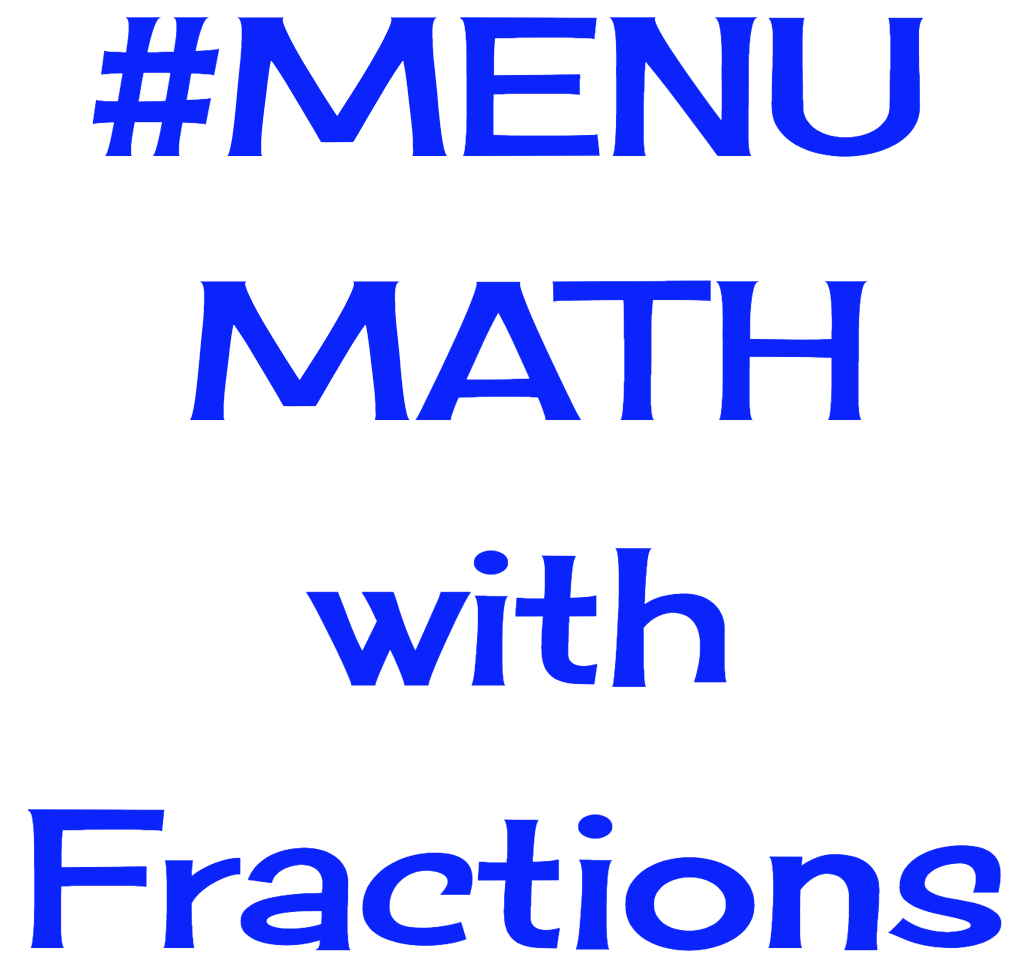











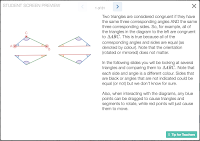



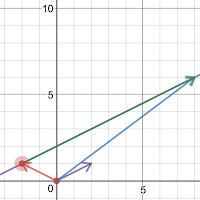




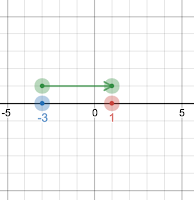
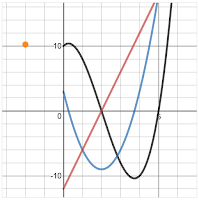

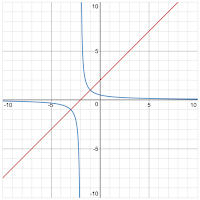
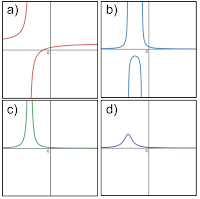
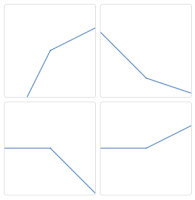

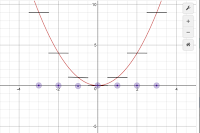

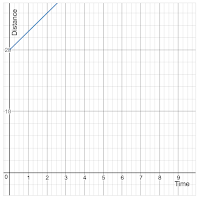
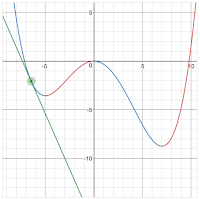






No comments:
Post a Comment